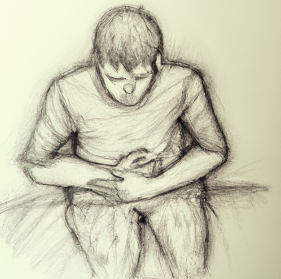- Home
- Candida Cleanse
- What Is a Yeast Infection

What Is a Yeast Infection?
Understanding Candida Facts
You may be asking: What is a yeast infection? If your partner or spouse were to come to you and say ‘I have a yeast infection’, you may wonder what this means.
To give us a better perspective lets start by asking the question what is Candida? Candida over growth is root cause of a yeast infection. There is a lot of marketing and are so many words that are thrown around with little thought given to the actual meaning of a yeast infection.
There is predominantly only 3 to 4 Candida strains that cause humans any major discomfort with the main one being Candida Albicans.
This yeast normally lives in the digestive system of a host organism. Candida is part of having a healthy life and aids resistance to outside bacteria and micro-organisms. It is part of the microflora of the gut and helps keep other harmful bacteria from taking over. Under normal conditions the immune system deals with the any overgrowth of yeast cells and they cause no physical or mental harm.
Candida is not pathogenic unless it undergoes a mutation. The fact that it has such an ability is quite phenomenal. Candida can mutate surprisingly quickly by reorganizing its chromosomes. This enables some yeasts to tolerate higher doses of anti-fungal medicine due to this ability to mutate.
See our What causes yeast infections page to get more information on how Candida can get to the point where it actually mutates into its pathogenic form. Pathogenic means the ability to bring a disease into being. With mutation having taken place it releases spores into the digestive tract.
The new fungal spores develop rhizoids (long root-like structures) which hook onto the intestine wall and penetrate the mucus membranes of the intestinal tract. This can lead to rather intense abdominal pains. If unattended and aided by the right conditions, the morphed fungal yeast can makes its way right through the intestinal wall and into the blood stream.

Once there it goes throughout the body looking for an opportunity to manifest itself. If you think that you may have a yeast infection please go and consult a health practitioner and get a formal diagnosis
The resulting health issues of having the intestinal wall compromised and resulted infectious growth is beyond the scope of this article. Once the spores have got into the blood there is no where that cannot be affected and infected by the Candida infection. Go and read our article to find out what kind of Candidiais symptom you may be experiencing. After reading just how much of the body can be affected you would almost be lead to believe that every single illness could be traced back to some form of Candidiasis.
Sometimes yeast infection symptoms are not caused directly by the yeast itself but by the resulted conditions created by the yeast infection. One of the major ones is a Leaky Gut Syndrome.
To summarise: what is a yeast infection?,- at it's basic form, it is the overgrowth and mutation of Candida due to various physical or emotional conditions and the resulted physical and mental manifestations of that mutation. Or in other words, A yeast infection, also known as Candidiasis, is a common type of fungal infection that occurs when the fungus Candida overgrows in the body. This overgrowth can occur in various parts of the body, including the mouth, throat, gut, skin, and genital area.
Yeast infections can be caused by a variety of factors, including taking antibiotics, which can disrupt the normal balance of bacteria in the body, and wearing tight or moist clothing that provides a warm and moist environment for the fungus to grow.
Treatment for yeast infections typically involves the use of antifungal medications, which can be taken orally or applied directly to the affected area. Maintaining good hygiene and avoiding tight or moist clothing can also help prevent yeast infections.
You have looked at what a yeast infection is. If you are wanting the most comprehensive tool to naturally cure this horrid condition ,take a look at yeast infection no more book. We have found this to be the most thorough resource in dealing with a Candida infection.
If you are concerned in any way, it's important to seek medical attention. If you suspect you have a yeast infection, the symptoms can be similar to those of other conditions, such as sexually transmitted infections (STIs). An accurate diagnosis is important for ensuring the proper treatment and preventing the infection from spreading or recurring.



New! Comments
Have your say about what you just read! Leave a comment in the box below.